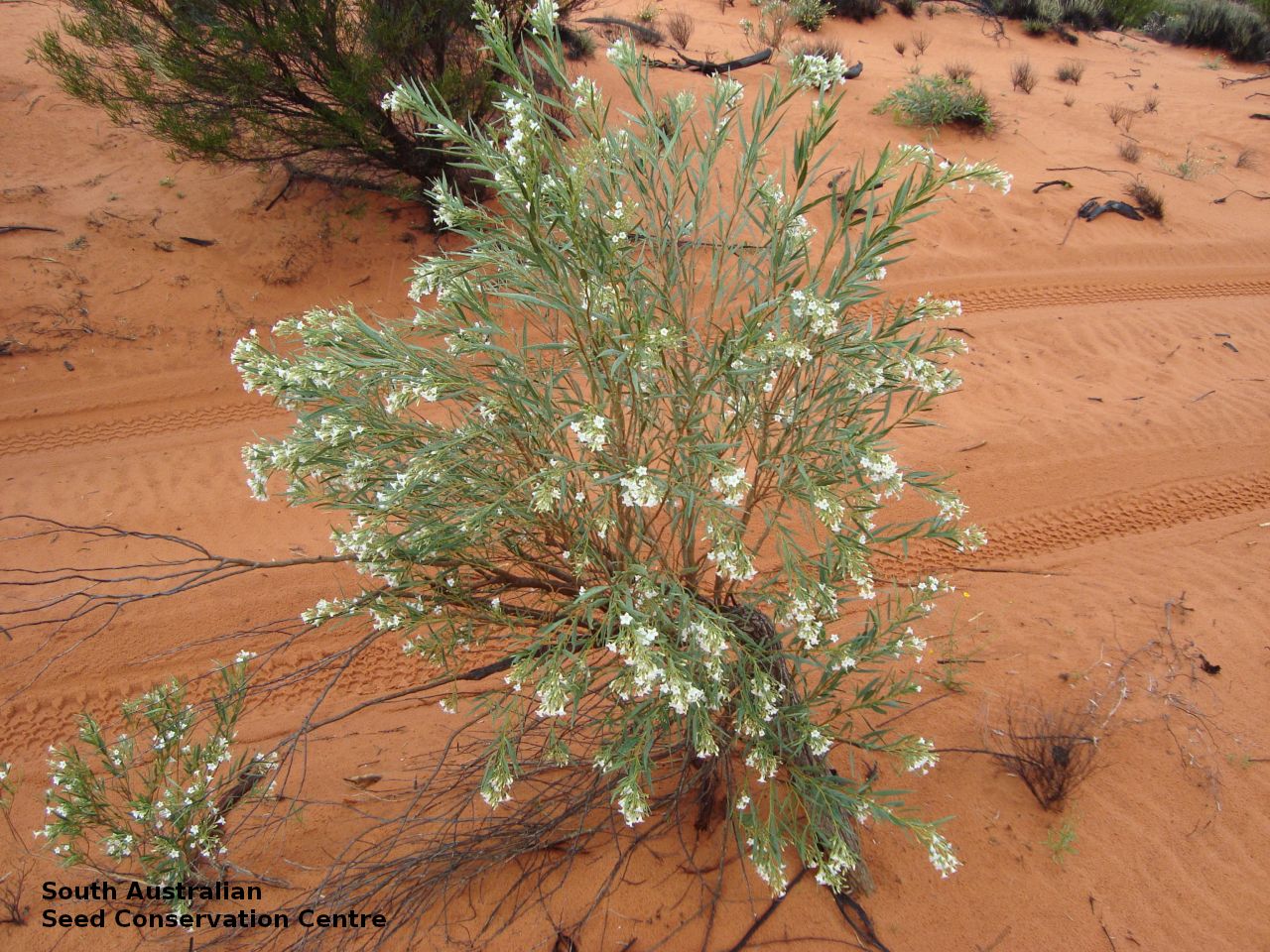
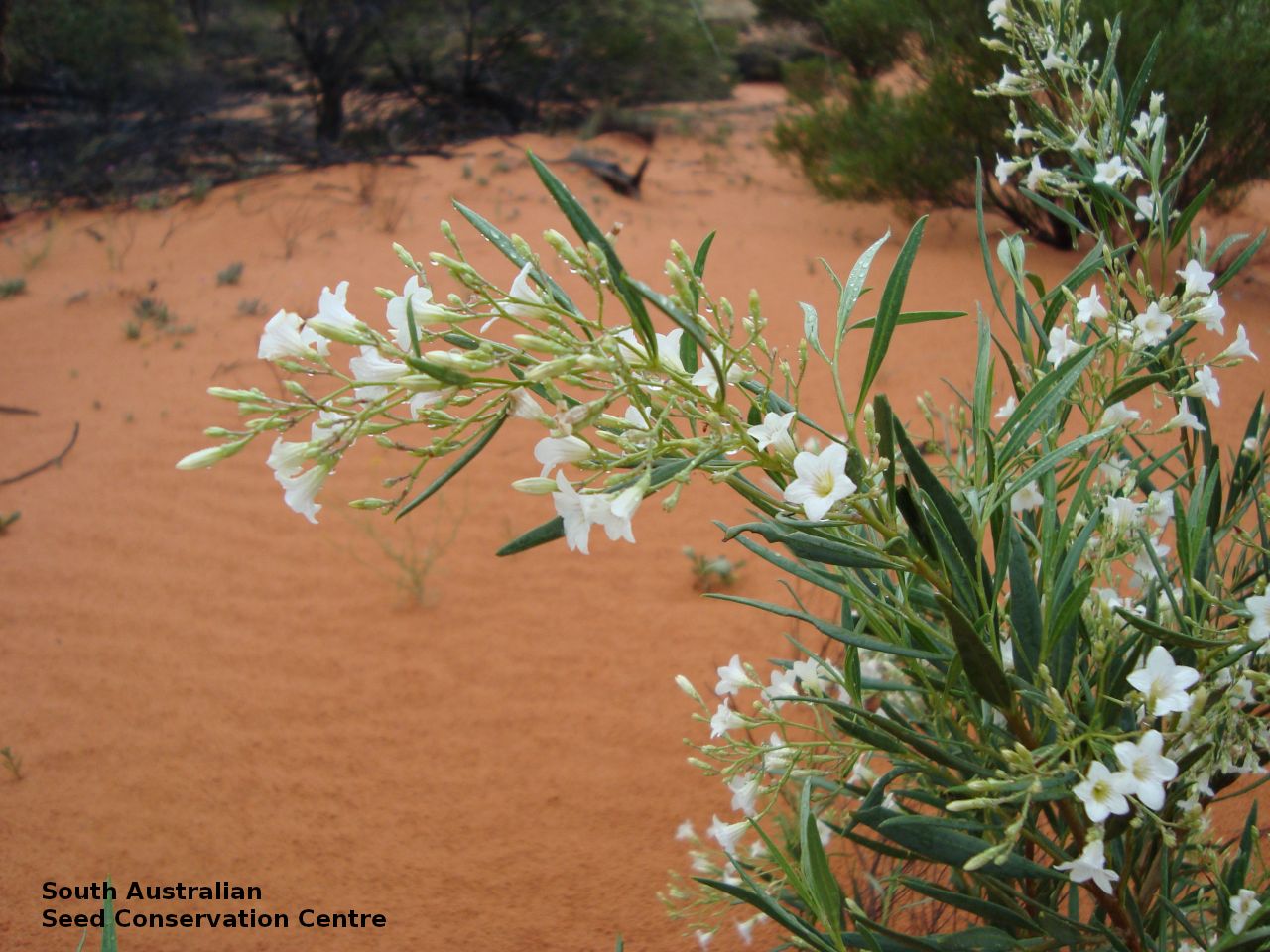
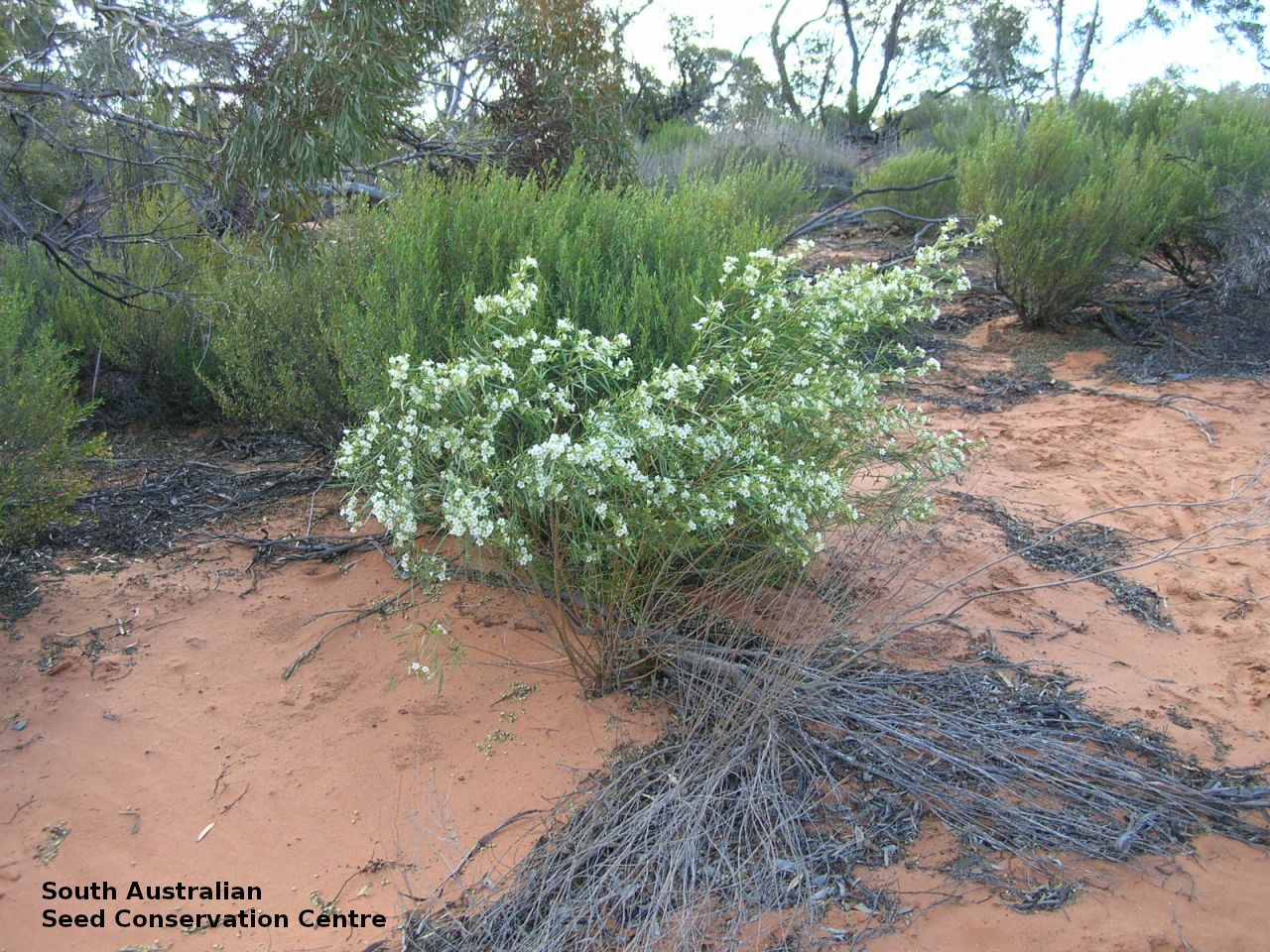
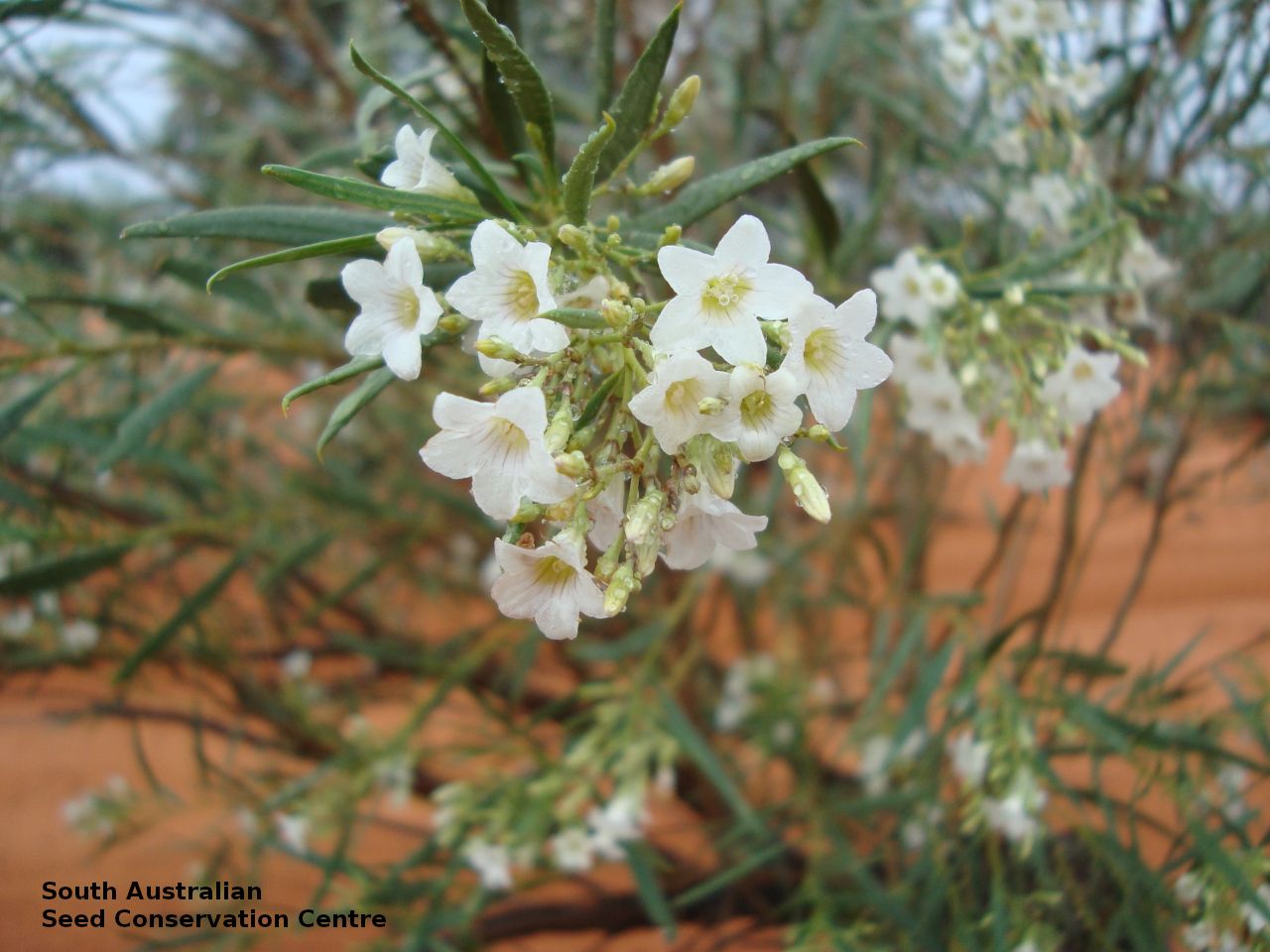
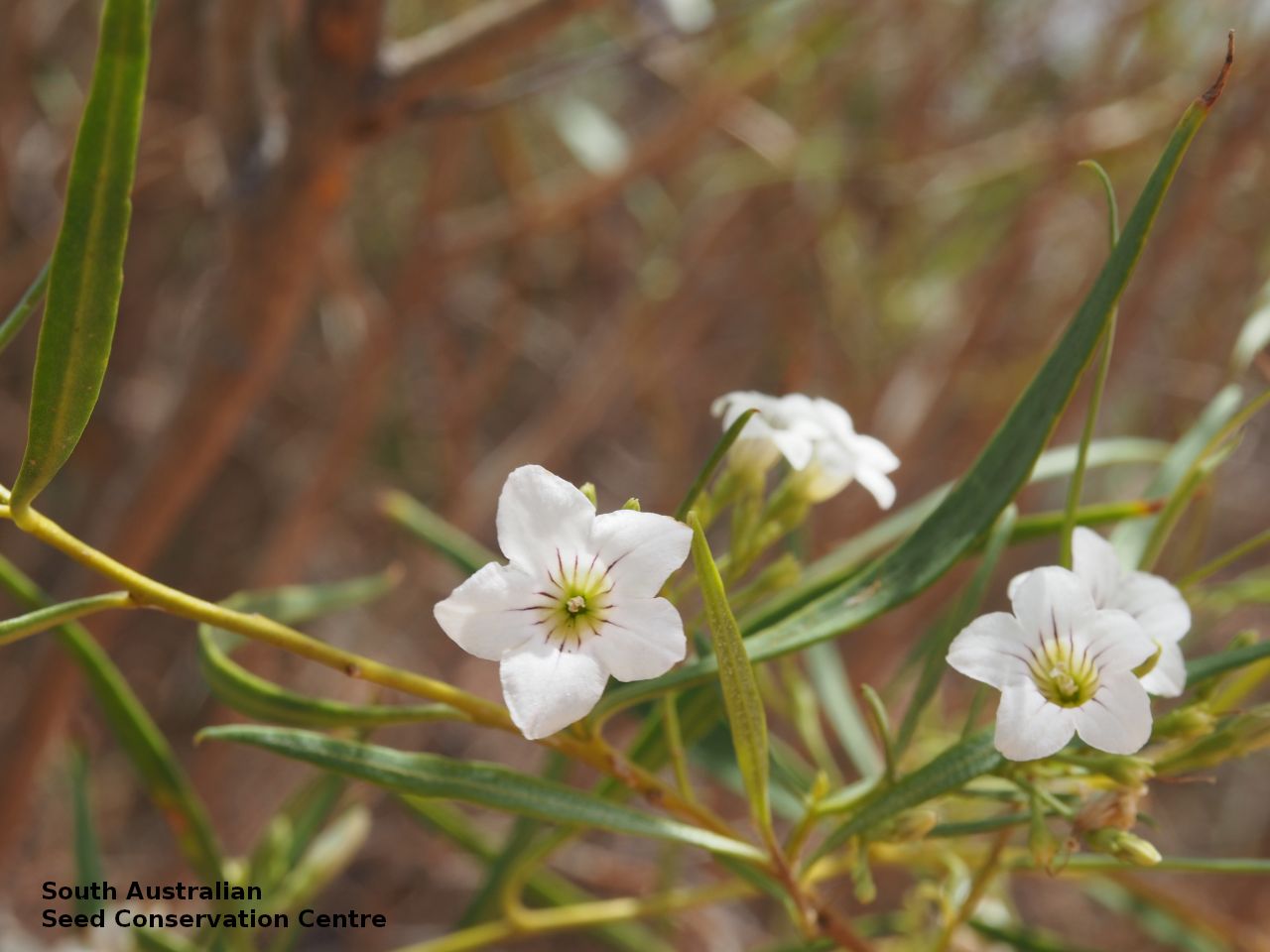
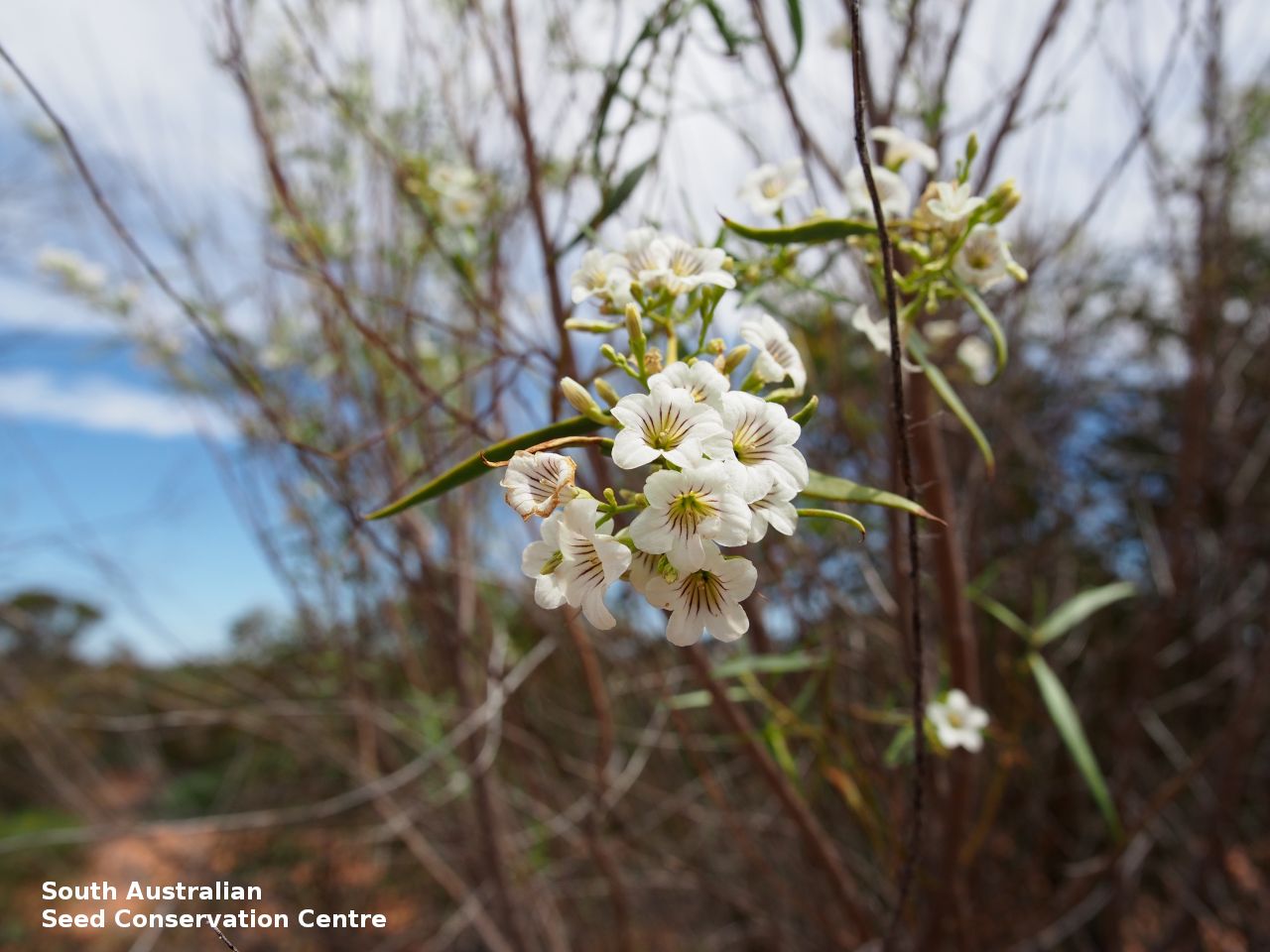
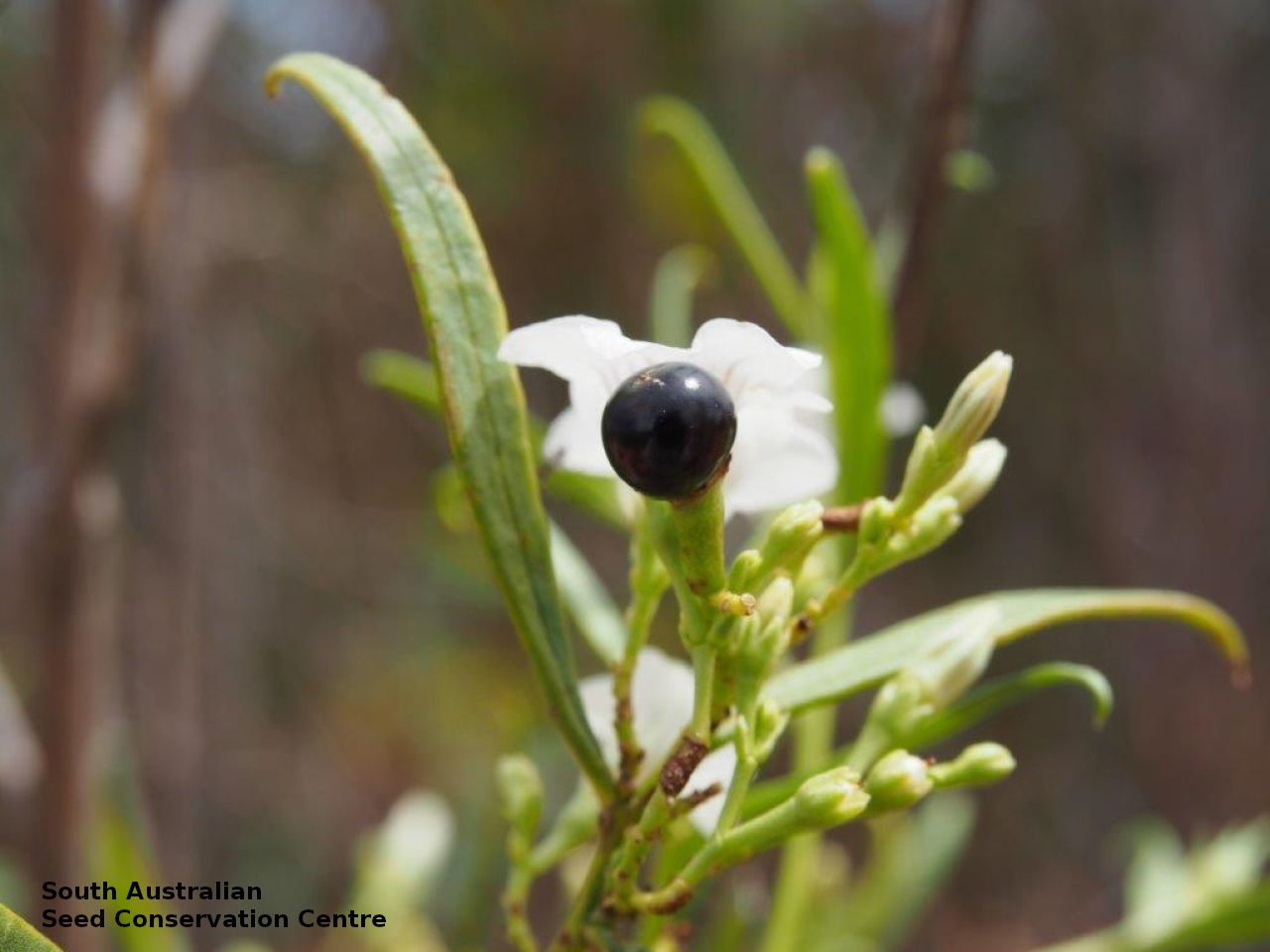
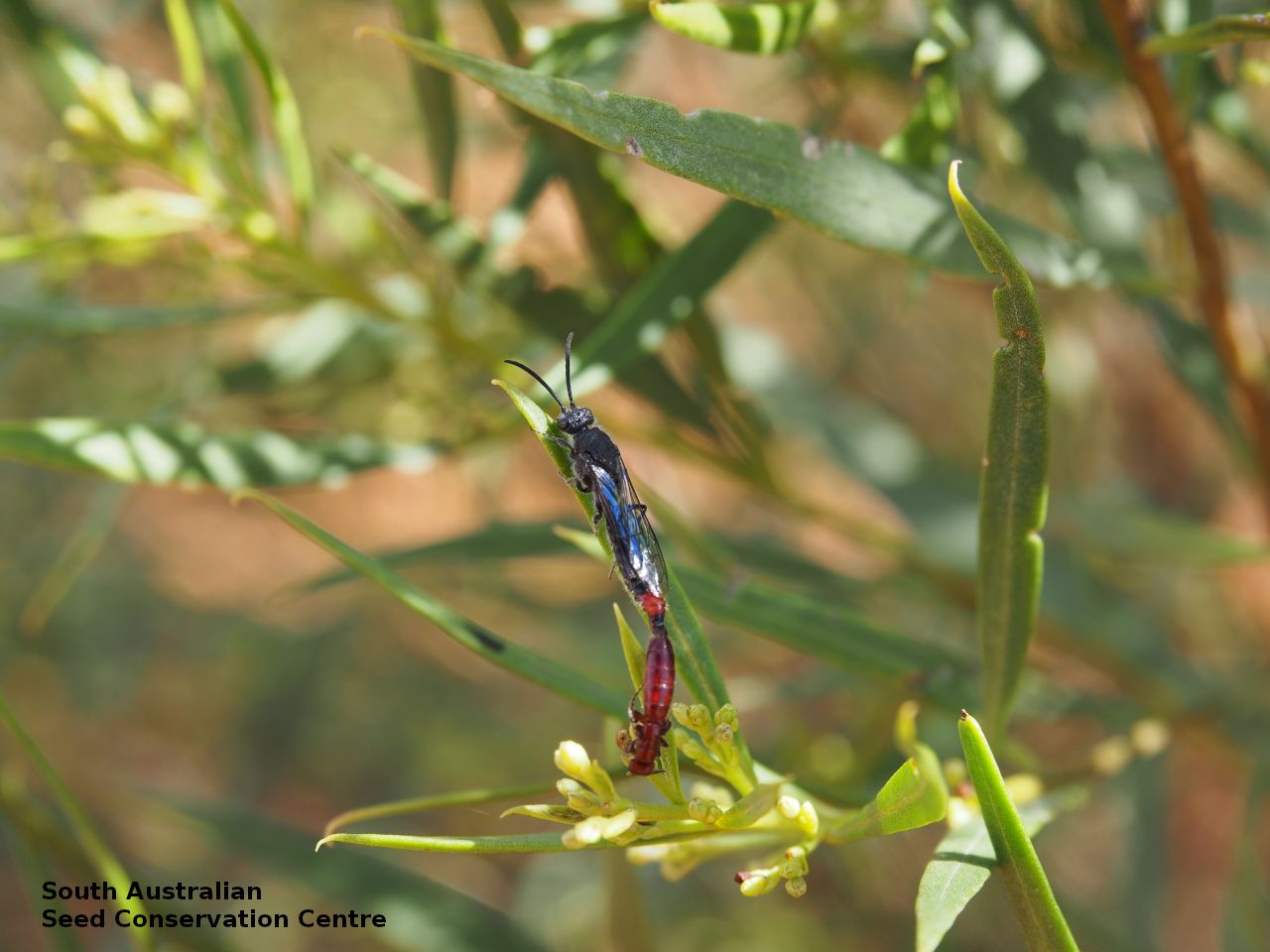
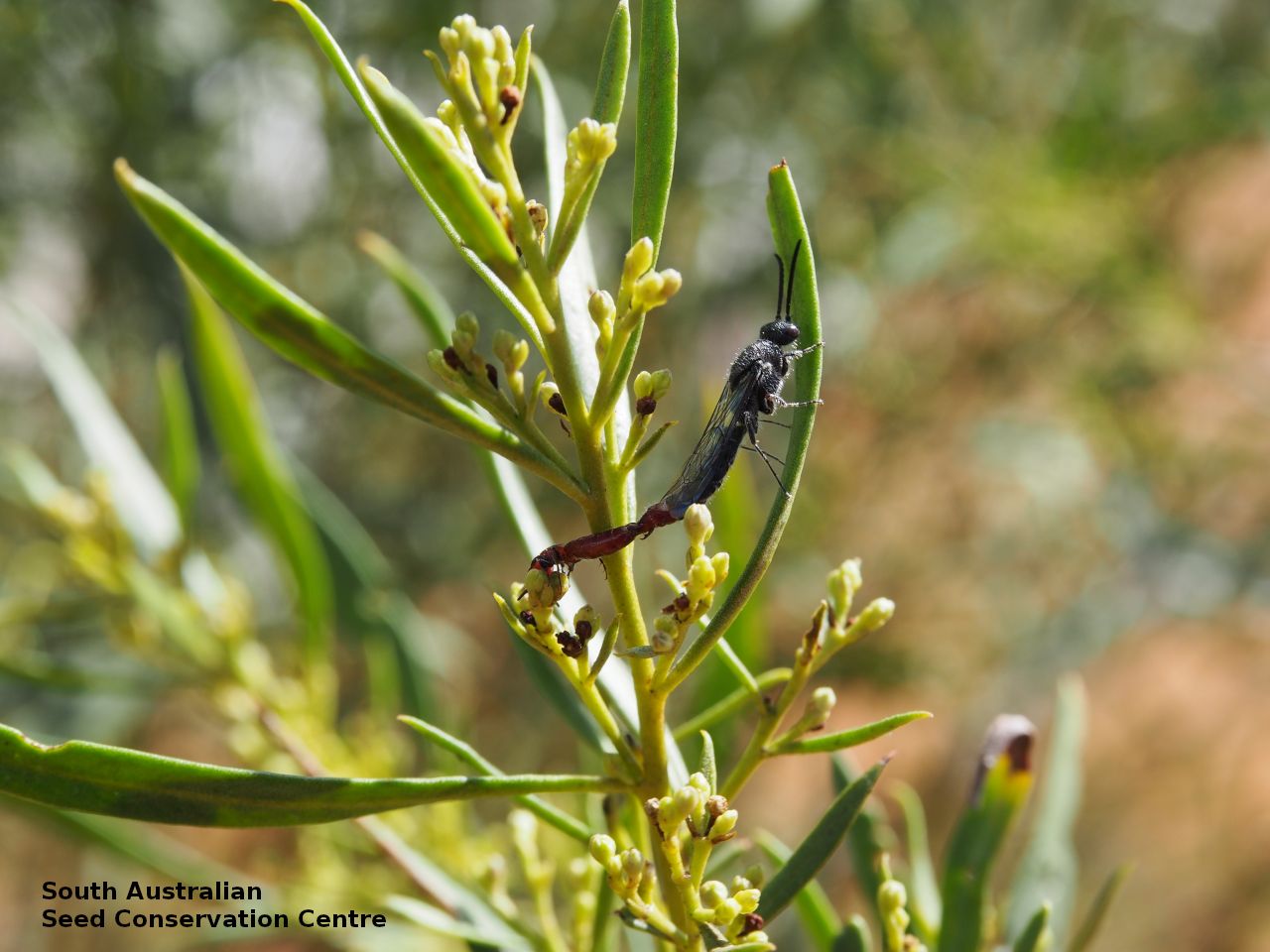
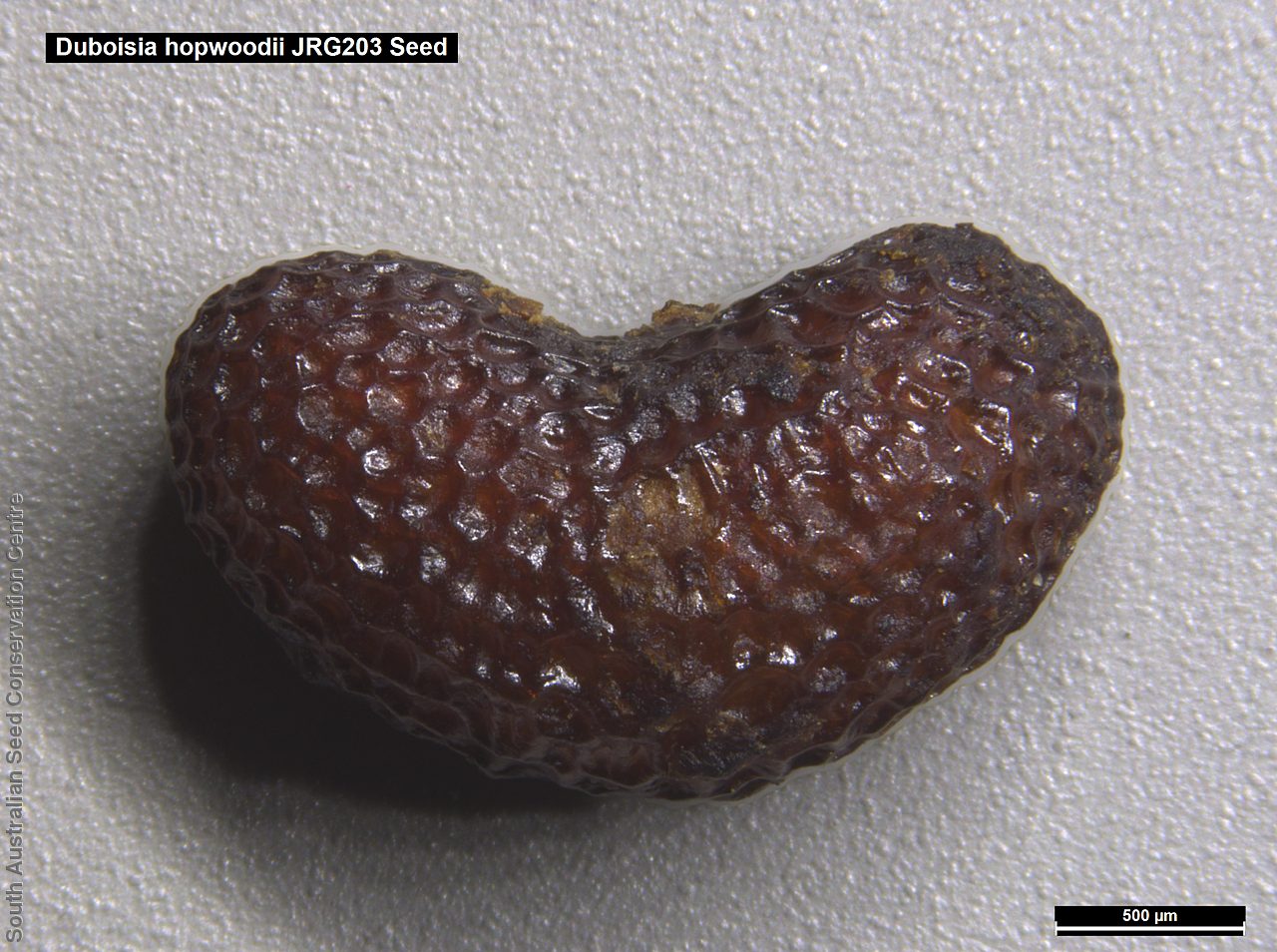
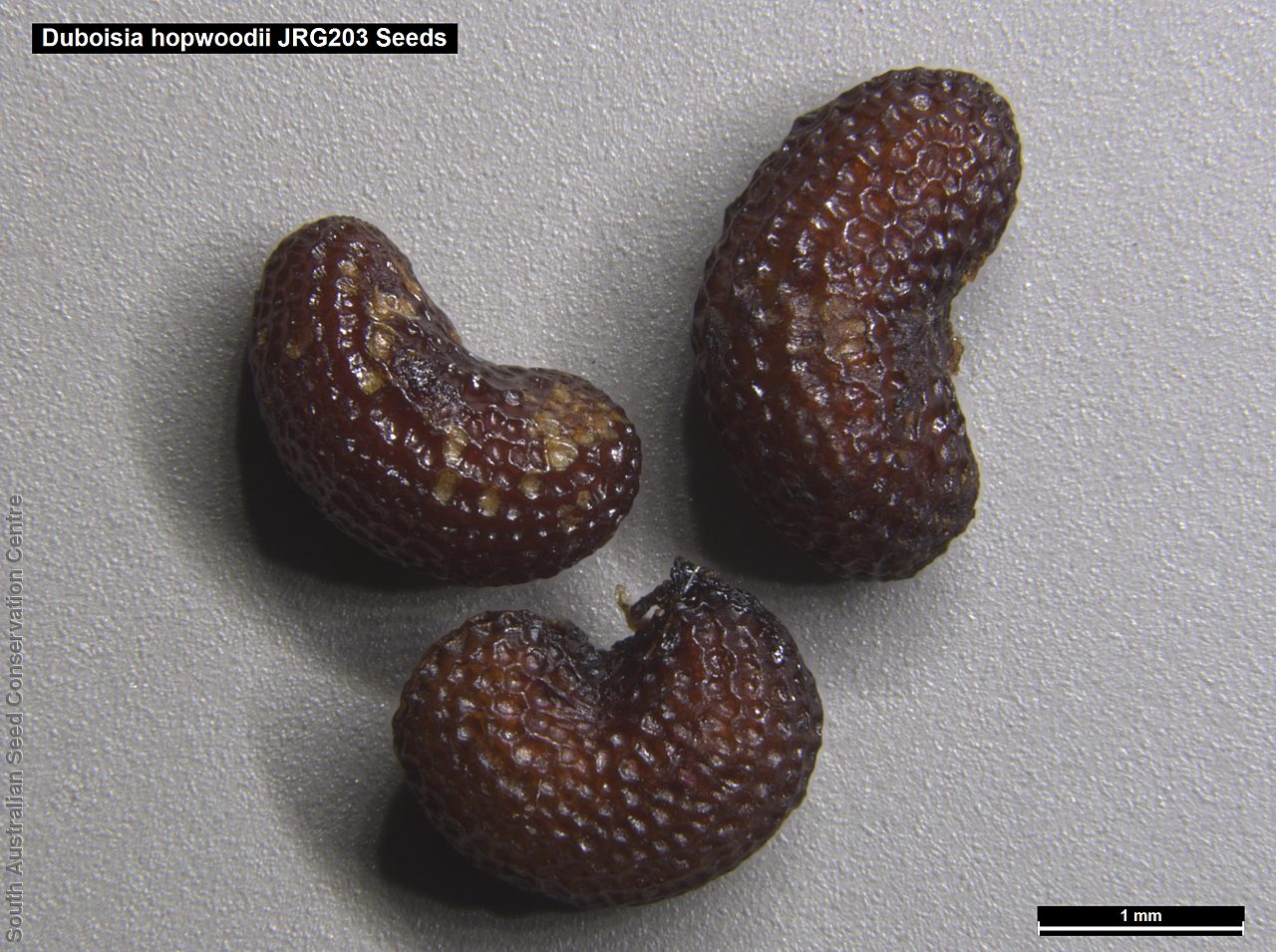

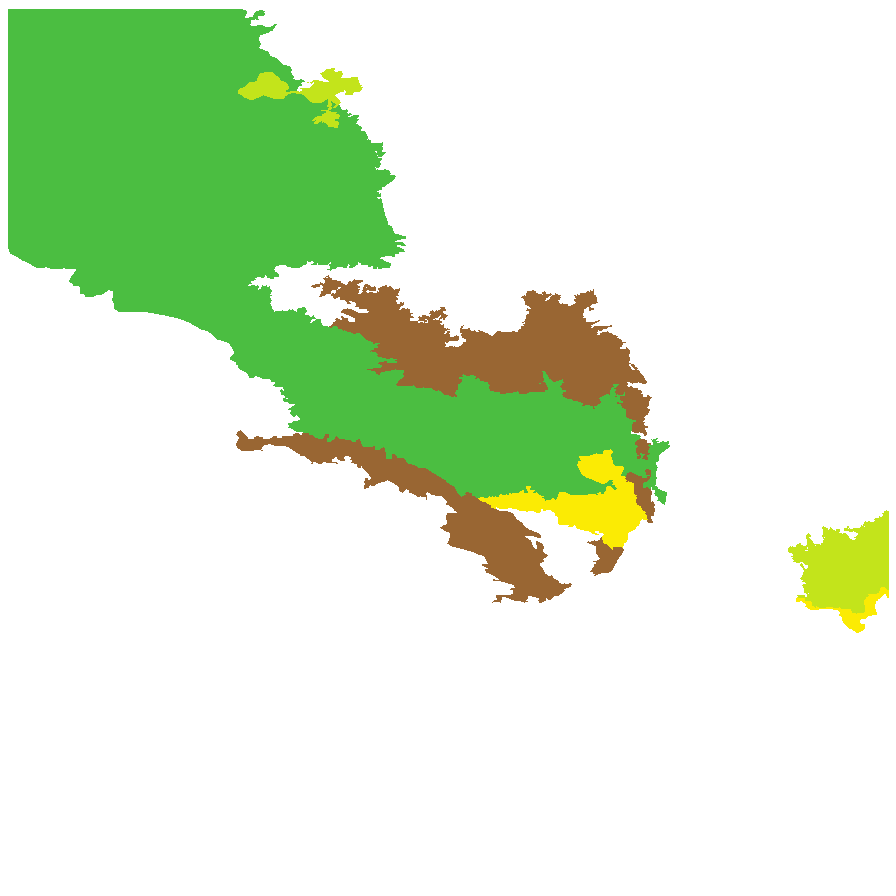
Botanical art
Prior names
Anthocercis hopwoodii
Common names
Pituri
Pitcheri
Etymology
Duboisia named after Charles Dubois (1656-1740), a London merchant and patron of botany. Hopwoodii named after Henry Hopwood (1813-1869), an English convict who established the town of Echuca in Victoria and a major sponsor of the Burke & Wills Victoria Exploring Expedition on which the type specimen was collected.
Distribution and status
Found across the northern part of South Australia, growing on red or yellow sand or sandy loam, on sandy plains, low dunes or sandy rises. Also found in Western Australia, Northern Territory, Queensland and New South Wales. Native. Common in South Australia. Uncommon in Queensland. Common in the other States.
Herbarium regions: North Western, Lake Eyre, Nullarbor, Gairdner-Torrens, Eyre Peninsula, Murray
NRM regions: Alinytjara Wilurara, Eyre Peninsula, South Australian Arid Lands, South Australian Murray-Darling Basin
AVH map: SA distribution map (external link)
Plant description
Compact shrub to 4 m high and 3 m wide. Leaves narrow-elliptic or lanceolate to linear, to 12 cm long and 13 mm wide; glabrous. Inflorescence a short spike with white flowers with purple striations in throat. Flowering between August and November. Fruits are purple-black globular berry to 6 mm in diameter. Seeds are brown reniform seed to 3 mm long and 1.5 mm wide, with a net-like surface. Seed embryo type is linear fully developed.
Seed collection and propagation
Collect seeds between November and February. Collect berries that are ripe, purple-black with soft flesh and a hard seed inside. Place the berries in a tray and leave to dry for 2 weeks. Then rub the dried pods gentley to dislodge the seeds. Use a sieve to separate any unwanted material. Store the seeds with a desiccant such as dried silica beads or dry rice, in an air tight container in a cool and dry place.
| Location | No. of seeds (weight grams) | Number of plants | Date collected | Collection number Collection location | Date stored | % Viability | Storage temperature |
|---|---|---|---|---|---|---|---|
| MSB | 680 (0.89 g) | 6-Dec-2005 | DJD288 Eyre Peninsula | ||||
| MSB | 700 (1.47 g) | 24 | 8-Dec-2005 | DJD309 Gairdner-Torrens |
Number of plants: This is the number of plants from which the seeds were collected.
Collection location: The Herbarium of South Australia's region name.
% Viability: Percentage of filled healthy seeds determined by a cut test or x-ray.